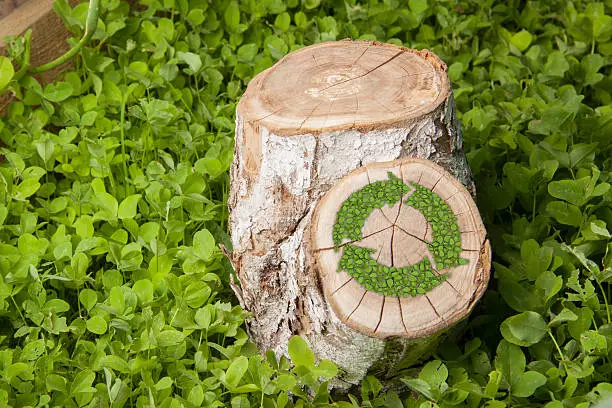BLOG
The Eco-Friendly Choice: Why Natural Wood Flooring is Making a Comeback

In recent years, there has been a significant shift in how homeowners approach flooring options. As concerns about climate change and environmental sustainability become more pressing, many are turning away from synthetic materials and returning to nature’s original choice: wood. Natural wood flooring is making a strong comeback, not only for its timeless aesthetic appeal but also because it is a more eco-friendly and sustainable option. In this article, we explore why natural wood flooring is gaining popularity again and how it aligns with modern values of sustainability, health, and home improvement.
The Timeless Appeal of Natural Wood Flooring
Wood flooring has always been a symbol of elegance and quality. Its warm tones and natural textures give any space a sophisticated and welcoming feel. Unlike synthetic materials, wood has a unique character that evolves, acquiring a patina that only enhances its beauty. This aging process is one reason wood flooring never truly goes out of style. Whether in a rustic farmhouse or a sleek, modern apartment, wood floors add an undeniable sense of warmth and charm.
Over the past few decades, engineered and synthetic flooring options, such as laminate and vinyl, gained popularity for their lower upfront cost and perceived durability. However, as tastes and values shift towards more sustainable living, many homeowners are realizing that these cheaper alternatives come with trade-offs, including environmental concerns, reduced lifespan, and potential health risks. Natural wood, on the other hand, is enduring in both fashion and function.
The Environmental Benefits of Natural Wood Flooring
One of the biggest drivers of natural wood flooring’s resurgence is its eco-friendly nature. When sourced responsibly, wood is a renewable resource that has a much smaller environmental impact than synthetic alternatives. Here’s why natural wood flooring is considered a sustainable choice:
1. Renewable Resource
Unlike plastic-based flooring options, which rely on non-renewable petroleum products, wood is a renewable resource. When forests are managed sustainably, trees can be harvested and replanted in cycles that ensure minimal harm to the environment. Responsible wood flooring companies source their products from certified forests where the ecosystem is protected, and new trees are planted to replace those that have been cut down.
2. Low Carbon Footprint
The production of natural wood flooring requires significantly less energy than that of synthetic alternatives. For instance, the manufacturing of vinyl and laminate floors involves high-energy processes and the use of harmful chemicals, contributing to pollution and carbon emissions. In contrast, wood flooring, when sourced and processed responsibly, generates fewer emissions and less waste.
Additionally, wood is a carbon sink. Trees absorb carbon dioxide from the atmosphere during their growth, and this carbon remains stored in the wood throughout its life cycle, even after the wood is turned into flooring. By choosing wood flooring, homeowners contribute to the reduction of greenhouse gases.
3. Longevity and Durability
While synthetic flooring options may be cheaper initially, they often have a shorter lifespan and may need to be replaced more frequently. Natural wood floors, however, are known for their durability. With proper care and maintenance, they can last for decades—sometimes even centuries. Furthermore, when wood floors begin to show signs of wear, they can be restored rather than replaced. Sanding, refinishing, and resealing can breathe new life into old floors, extending their lifespan and reducing waste.
If you’re considering restoring your existing wood floors rather than replacing them, working with a specialized wood floor restoration company UK ensures that your floors will be brought back to their original glory using sustainable methods, preserving both the material and the environment.
Health Benefits of Natural Wood Flooring
Beyond its environmental advantages, natural wood flooring is also a healthier choice for homeowners. Indoor air quality is an important factor in creating a comfortable and safe living environment, and certain flooring materials can release harmful volatile organic compounds (VOCs) into the air. These VOCs are often found in synthetic materials, such as vinyl or laminate, and can contribute to respiratory issues, allergies, and other health problems.
Natural wood flooring, on the other hand, is free of these harmful chemicals. When sealed with eco-friendly finishes, wood floors emit very low or no VOCs, making them an ideal option for those looking to improve indoor air quality. Additionally, wood floors do not trap dust, allergens, or pet dander in the same way that carpets do, making them a great choice for people with allergies or asthma.
The Aesthetic Flexibility of Wood
Another reason for the resurgence of natural wood flooring is its versatility in design. Wood comes in a wide variety of species, each offering distinct colors, textures, and grains. From light, airy oak and maple to deep, rich walnut and mahogany, there’s a wood species to suit any interior design preference.
Wood flooring can also be customized to fit a variety of styles. Homeowners can choose between different plank widths, finishes (from matte to high gloss), and installation patterns, such as herringbone or chevron, to create a unique and personalized look. Whether you prefer a rustic, distressed look or a sleek, modern aesthetic, wood flooring can be adapted to meet your needs.
The Cost Consideration: Is Wood Flooring Worth the Investment?
One of the primary reasons some homeowners hesitate to choose natural wood flooring is the cost. It’s true that the initial cost of wood flooring can be higher than that of synthetic alternatives, but the long-term benefits often outweigh the upfront expense.
Wood floors are incredibly durable and can last for decades, even a lifetime, with proper care. In contrast, synthetic floors, such as vinyl or laminate, often need to be replaced after 10-20 years, which can add up over time. Additionally, wood floors can be sanded and refinished several times over their lifespan, making them a long-term investment rather than a temporary solution.
Moreover, wood floors tend to increase a home’s resale value. Real estate experts agree that homes with natural wood flooring often sell faster and for higher prices than those with synthetic or carpeted floors. Buyers recognize the value and timeless appeal of wood, making it a smart investment for homeowners looking to enhance both the comfort and financial value of their property.
Conclusion: A Sustainable Future with Natural Wood Flooring
As sustainability becomes an increasingly important consideration in home design, natural wood flooring is experiencing a well-deserved comeback. Its environmental benefits, longevity, and aesthetic appeal make it an ideal choice for homeowners who want to make a responsible and stylish flooring decision. In an age where people are looking for eco-friendly solutions that don’t compromise on quality, natural wood flooring stands out as a durable and beautiful option that enhances both the value and health of a home.
Whether you’re installing new wood floors or working with a wood floor restoration company to revitalize your existing floors, choosing natural wood is a decision that pays off in more ways than one. It’s a smart investment for the future—one that benefits your home, your health, and the planet.











